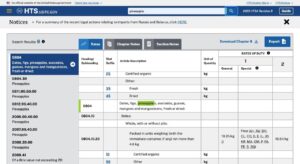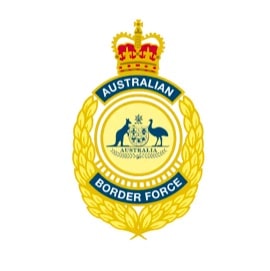You are looking to import products between the United States and Australia? This is for you.
For companies, importers, and exporters looking to build or develop their trading links between the US and Australia, it is essential to comprehend the complexity and concerns of freight transportation between these two countries. In decision-making and supply chain management, elements like shipping costs, transit durations, and the effect of customs and taxes on the total cost of trade are crucial.
Table of Contents
ToggleWhat is the best method of transport between the USA and Australia
Importing or exporting your items is totally up to you. It can either be by sea or by air. Below, you will find a breakdown of the pros and cons of both methods.
.
DocShipper Tips: Cargo shipping is interesting if you prioritize cost-effectiveness over delivery time for your products.
Note DocShipper: Our team of specialists would be delighted to help you with your strategy or respond to any questions you may have. All you have to do is fill out our online form to get in touch with us.
Sea freight from the US and Australia
Australia's greatest trading partner, and imports from the United States have increased by 91% since 2005.
A Free Trade Agreement has been made by Australia, as the US Customs and Border Protection mentions that “Most goods imported into the U.S. under the Australia Free Trade Agreement (AUFTA) are free of duty and merchandise processing fee (MPF). All AUFTA goods will be duty free on January 1, 2022. “
The partnership between the United States and Australia in sea freight is primarily driven by commercial relationships between shipping companies, logistics providers, and businesses involved in international trade.
The trading volume between the United States and Australia has experienced consistent growth over the years. Maritime transportation plays a crucial role in facilitating the movement of goods between the two countries.
The sea freight relationship between the United States and Australia has evolved to meet the changing demands of international trade and advancements in logistics.
Overall, sea freight is an excellent option for companies involved in international trade, especially for long-distance shipments or bulky cargo, because of its affordability, capacity for large shipments, variety, global coverage, and reliability which both countries are focused on
Advantages of sea freight
Extensive port network: Along its coastline, the United States boasts a wide network of ports, including important ports like Los Angeles, Long Beach, New York, and Savannah. These ports are well-equipped with advanced infrastructure, modern handling facilities, and efficient logistics operations. Businesses have a variety of choices for shipping and gaining access to international markets because to the broad port network.
Trade connectivity: Because of its strategic location, the US acts as a vital trade gateway between significant regions. Its geographical location makes it possible to reach many continents, such as Europe, Asia, and Latin America, with ease. This linkage improves the effectiveness of the supply chain and gives companies access to a variety of markets via marine freight.
The US's wide port network, trade connections, reliable transportation infrastructure, variety of cargo handling capabilities, economies of scale, accessibility to inland markets, flexibility in shipping options, and regulatory requirements all assist sea freight from the country. Due to these benefits, sea freight from the US is a desirable and dependable option for companies looking for effective and affordable options for international shipping.
Disadvantages of sea freight
Compared to air or land transportation, sea freight often has a longer transit time. It takes longer to ship goods over great distances via maritime routes, which can have an influence on supply chain management, inventory control, and customer satisfaction. Transit times can also be further extended by delays brought on by bad weather, port congestion, or customs processes.
Moreover, it is more difficult to alter a shipment once the products are loaded onto a container ship. Sea freight gives less flexibility to change shipment details or reroute items during transit than air or land transportation. In order to account for any potential changes or contingencies, businesses should thoroughly plan and arrange their shipments in advance.
The main shipping seaports in the U.S.
The seaport infrastructure in the US is highly developed due to significant year-round commercial activity. Each year, the country’s numerous ports manage a large volume of both international and domestic waterway vessels transporting a wide range of goods. The overall enterprise receives substantial investments amounting to billions of euros.
Port of New York and New Jersey
With 72 percent of all first port of calls going to the New York and New Jersey Port, it is the largest port on the East Coast. It consists of the Port Authority Marine Terminal, the Brooklyn Port Authority Maritime Facility, and the Newark Bay Extension, three main facilities that together handle approximately 7.4 million containers yearly. The port, which includes waterways in the New York-New Jersey Estuary, contains two foreign trade zones.
Virginia Port
Virginia Port, situated in the state of Virginia, United States East coast, is a thriving maritime facility handling an impressive volume of cargo. With its strategic location on the Atlantic Ocean, the port facilitates the movement of over 2.5 million twenty-foot equivalent units (TEUs) annually, making it a significant gateway for international trade.
The main shipping seaports in Australia
Australia has grown to be an important nation for global shipping. A huge number of nations can access it thanks to its South Pacific location, and $1.2 billion worth of trade passes through its shipping ports every day. Oceania is a continent that is abundant in natural resources and exports a variety of agricultural products to nations like Japan, China, the United States, South Korea, and New Zealand, including wool, iron ore, gold, LNG, and coal.
Port of Sydney
Sydney's port is a natural harbor that offers both commercial shipping and leisure activities. It covers 103 acres and has 11 berths as well as some more private berths in Gore Cove. Additionally, there is a bulk terminal with three specific berths for salt, sugar, and cement. 250,000 people use it annually, and 29 million tonnes of freight are handled there.
Port of Melbourne
The Port of Melbourne is the nation's main port for containerized cargo, and manages 3.28 million TEU and 79 million tons of cargo annually. Along with 5 river docks, 2 container terminals, and 3 multipurpose berths at the “Swanson dock”, the port offers 34 cargo handling facilities.
Port of Adelaide
The main maritime port in Southern Australia is the Port of Adelaide, it’s located several kilometers inland from the St. Vincent Gulf. It is a well-known port for exporting wine, ores, concentrates, cereals, cars, and other vehicles. Over 1000 ships and over 110 million tons of cargo are handled by the port annually.
DocShipper is an international freight forwarder, we arrange the delivery of your products from the supplier's warehouse to the final location. No matter the shipping mode (air, sea, road, or train), we handle everything from packing to transit planning to customs clearance and administrative processes. Contact us to receive a free estimate in less than a day.
How much time does it take to ship between the U.S. and Australia
Based on those information, the shipping time between the United States and Australia is estimated between 25 and 37 days.
| USA/Australia | Port of Sydney | Port of Melbourne | Port of Adelaide |
| Port of Los Angeles | 25 days | 27 days | 3 days |
| Port of Long Beach | 25 days | 27 days | 28 days |
| Port of New York and New Jersey | 35 days | 36 days | 37 days |
Do I have to export through full container or container consolidation between the US and Australia?
There are three types of standard sizes' container often used by importers. All of them can be used for both leisure and business travel.
- The High Cube at 40 feet, which can hold 76 cubic meters, is the headquarters.
- The forty-foot container, which can hold 67 cubic meters of material
- 20-foot container with a 33 cubic meter capacity
Less than container Load
LCL shipping is a suitable choice if you need extra product (in terms of size or quantity) to fill the entire container. Additionally, it enables you to just pay for the exact amount of space you actually use, which makes it perfect for little deliveries. Your goods will be placed next to those of a different vendor going in the same direction.
Advantage of LCL
Cost effectiveness is one benefit of adopting Less than Container Load (LCL) shipping. LCL enables companies to combine smaller shipments into a single shared container, splitting the transportation costs and lowering prices for companies with lesser shipping volumes. Due to this, LCL is a cost-effective solution, particularly for small and medium-sized firms or companies with irregular shipping requirements.
Disadvantage of LCL
LCL shipping has the possibility for slower travel times than Full Container Load (FCL) shipping, which is one drawback. LCL cargoes may take more time for handling and coordination because port consolidation and deconsolidation operations are involved. This might not be suited for time-sensitive shipments or companies with severe delivery dates because it can lengthen the entire transportation duration for the items.
Full container Load (FCL)
FCL, short for "Full Container Load," means when you've got a lot of goods to ship, you book a whole container just for yourself. No sharing with others – it's all yours to load up with your goods and send off to your destination.
Therefore, whether you fill it up to the brim, optimal user FCL will also be more affordable and safer for a broader number of people. Unquestionably, a full container may benefit from being less expensive than LCL after it reaches 15 m3.
Advantage of FCL
Faster transit times compared to Less than Container Load (LCL) shipping are one benefit of employing Full Container Load (FCL) shipping. FCL does not require consolidation or deconsolidation procedures at ports because the entire container is devoted to a single cargo. Because of the accelerated loading, unloading, and transportation of goods, FCL is an excellent option for time-sensitive shipments or companies needing quicker delivery.
Disadvantage of FCL
The potential for greater expenses, especially for companies with smaller shipments, is a drawback to FCL shipping. Smaller amounts of commodities may have a greater cost per unit because companies must reserve and pay for the entire container. For companies who ship infrequently or with lesser freight volumes, this alternative may not be as cost-effective. However, organizations with larger or more frequent shipments can offset the cost disadvantage.
Special sea freight between the US and Australia
Reefer containers: they're made to transport commodities that need to be kept at a specific temperature, like medicines or perishable food items. Businesses requiring controlled temperature and humidity conditions during sea shipping between the US and Australia may be able to get specialized reefer container services.
Ro-Ro services: it’s intended specifically for the transportation of wheeled cargo, including cars, trucks, and large pieces of equipment. These services enable the driving of machinery or vehicles onto specialized vessels, doing away with the necessity for disassembly or containerization. Businesses in the automotive sector or those needing to transport big vehicles or rolling stock may find Ro-Ro services to be a useful choice.
Breakbulk shipping: It’s transporting non-containerized cargo that cannot be placed directly into ordinary containers, such as sizable boxes, barrels, or heavy machinery. Businesses with specific cargo requirements or situations where containerization is not practical or cost-effective may have access to break-bulk services
Ocean cargo is the most well-known shipping option when talking about international trade between the US and Australia. When compared to airfreight, this method is significantly less expensive for long-distance and high-volume transportation. You can ask the experts at DocShipper any queries you may have concerning heavy lifting or other types of items. They will respond to all of your inquiries and offer you the best available option. Contact us if you want to find out more.
How much does it cost to ship between the United States and Australia?
On average, shipping between US and Australia can range between $800 to $4500 depending on several factors. These factors include the shipping method (Full Container Load or Less than Container Load), container size, weight, and volume of the cargo, the chosen shipping line or carrier, the specific ports of origin and destination, and any additional services required.
Maritime freight rates might change depending on a number of variables, including fuel costs, consumer demand, and seasonal variations. Therefore, it is advised to get in touch with many service providers to compare prices and bargain for the best deal for your particular shipping requirements, don’t hesitate to chat with an expert and fill out our form.
Added expenses:
Customs duties and Taxes: Additional costs to take into account include import tariffs, taxes, and fees levied by customs officials in both nations. The laws governing customs and the rates that apply depend on the nature of the imported or exported products.
Documentation and Customs Brokerage: For international shipping, it's essential to have the right paperwork, including commercial invoices, packing lists, and customs declarations.
Port charges and terminal handling fees: Ports charge a variety of fees and charges for processing and handling shipments. These fees could cover terminal handling costs, container storage costs, port security costs, and other port-related costs.
Insurance: Protecting the value of the products during transit requires careful consideration of shipping insurance. Businesses may decide to obtain cargo insurance to protect themselves against loss, damage, or theft even if it is not required. The type and value of the products being shipped will determine the cost of insurance.
DocShipper advice: Air freight is the best option if :
- Your cargo is less than 2m³.
- If you have a deadline requirement
DocShipper note: Looking for prices or advice for your air freight shipment? Click on our button to fill in our online form and a dedicated expert will contact you within 24 hours!
Air freight between the United States and Australia
Between the US and Australia, air freight travel is highly popular. The United States are certainly a hub for both maritime and aviation traffic.
When transporting a few products, air freight is often preferred over maritime freight. In fact, there are additional costs associated with delivering small amounts by sea, such as bundling and unbundling fees at the port, because your product must share a container with other deliveries. Because of this, if your shipment doesn't exactly measure 3 m3, we recommend delivering by air.
Classic vs. Express Air freight
There are two different options to ship your items by air:
- Using the space on scheduled commercial flights offered by airlines like American Airlines, Air China, Cathay Pacific, and Emirates, classic airfreight will load your cargo.
- The networks of “courier companies” that provide door-to-door services, such DHL, FedEx, TNT, and UPS, operate express airfreight. Express delivery is a quick and practical choice for sending small products or important papers across international borders.
Major airports in the US:
- (ATL) Hartsfield-Jackson Atlanta International Airport – Atlanta, Georgia
- (LAX) Los Angeles International Airport – Los Angeles, California
- (ORD) O'Hare International Airport – Chicago, Illinois
- (DFW) Dallas/Fort Worth International Airport – Dallas, Texas
- (DEN) Denver International Airport – Denver, Colorado
- (JFK) John F. Kennedy International Airport – New York City, New York
Major airports in Australia:
- (SYD) Sydney Airport – Sydney, New South Wales
- (MEL) Melbourne Airport – Melbourne, Victoria
- (BNE) Brisbane Airport – Brisbane, Queensland
- (PER) Perth Airport – Perth, Western Australia
- (ADL) Adelaide Airport – Adelaide, South Australia
- (OOL) Gold Coast Airport – Gold Coast, Queensland
Advantages of sea freight
Speed and efficiency: When compared to other forms of transportation, air freight is faster. Long distance shipments can be made in a matter of hours or days, ensuring prompt delivery and cutting down on transit periods. For time-sensitive items or situations where rapid delivery is essential, this speed is very beneficial.
Global connectivity: With airports and airlines serving a wide range of locations worldwide, air freight offers extensive global connectivity. Businesses can more simply and effectively access rural or distant markets because to this connectivity. Airports serve as nodes that link various areas, supporting smooth networks of trade and transit.
Reliable schedules: Airlines follow set flight schedules, providing consistent and predictable arrival and departure times. This enables companies to more precisely manage their supply chains, satisfy client requests, and steer clear of delays brought on by unsure transit times or outside variables like bad weather or backed-up traffic.
Reduced inventory costs: The speed of air freight helps minimize inventory holding costs. Businesses can maintain lower inventory levels as they can replenish stock quickly, thereby reducing storage costs and the risk of inventory obsolescence.
Disadvantages of sea freight
Cost is one of the main issues with air freight. In general, air freight is more expensive than other forms of transportation like rail or the sea. Charges for air freight frequently include items like fuel costs, handling fees at airports, security precautions, and specialist machinery. Certain types of cargo, notably big or heavy products, may find air transportation to be less economically viable due to the high expenditures involved.
Moreover, the US and Australia are far from each other, which would cost far too much.
Air freight has volume and capacity restrictions. Cargo space on airplanes is constrained, especially when compared to railroads or oceangoing boats. Due to the restricted capacity, larger shipments may need to be split into smaller ones or sent via alternate ways. Additionally, there may not be enough cargo space available at busy times or times of high demand, which could result in delays or increased expenses.
Due to its substantial carbon emissions, air freight has a negative influence on the environment. Large fuel burns by aircraft result in the release of greenhouse gases, which contribute to climate change. Comparing airfreight to other modes of transportation like the sea or rail, the carbon footprint of airfreight is significantly larger. Due to this negative environmental impact, the logistics sector is under more scrutiny and pressure to be more sustainable. To lessen the environmental impact of airfreight, several businesses are looking at alternative solutions and investing in carbon offset programs
How much does air freight cost between the US and Australia
Shipping costs between the US and Australia depends on many factors including Weight and Volume of the shipment, Freight class or even the Airline chosen.
For example, to air freight to Australia, for boxes more than 45 kg it’s $1.41 per kg; for more than 300 kg, it’s $1.10 per kg and for more than 1000 kg, $0.95 per kg.
How to calculate the volumetric weight of your shipment
There are few steps to calculate the volumetric weight.
- For Classic airfreight: 1 CBM = 167 kg
- For Express airfreight = 1 CBM = 200 kg
DocShipper coordinates all aspects of international transport, assisting small and medium-sized enterprises, as well as private individuals, with import and export. In the US, DocShipper also serves as a full-service customs broker. Call us right away, so we can discuss your needs or contact us for a free shipping quote.
Customs clearance between the US and Australia
Importing regulations regarding customs clearance in Australia are very strict, and even more when it comes to the United States.
What you’ll need:
- A commercial Invoice
- Customs entry or informal clearance document
- Bill of Leading
- Other documents relating to the importation
You must register for GST in order to receive input tax credits, and give your Australian Business Number (ABN) to the Australian Border Force before importing any products into Australia.
A customs value (in AUD) must be assigned to each item being imported into Australia. Importers (or authorized customs brokers) are therefore required to self-evaluate their products. Check the official website for the most recent tariff classification for Australia. Customs duty is typically 5%.
Customs duty
The type of products being imported, the nation of origin, and the value of the finished items are some of the variables that will affect the amount of customs tax that must be paid on imports to Australia.
Most general cargo is typically subject to an import duty of 5% of the Free on Board (FOB) value.
It is challenging to give a precise number for the amount of customs duty payable on imports to Australia due to the vast range of customs duty rates and exemptions.
To guarantee compliance with customs laws and to precisely determine the customs tax due on their goods, importers should study the Australian Customs Tariff and cooperate with a customs broker or freight forwarder.
Where to look up for your HS code for your products
Asking your supplier for the HTS code of your products is the simplest approach to learn it. In fact, if someone is accustomed to selling his goods for export, he is likely to be familiar with the HTS code.
By simply typing a term, like “pineapple” in our example, you may also use the “Harmonized System” to search any nation's tariff database.
Let’s see this together, go to the official website and take for example the key word “Pineapple”.
You know now the HTS code for the pineapple, which is 0804.30, and it can be used internationally.
Does Docshipper charge duty?
By using our customs broker, you won't be charged. To verify it for you, we will return with the paperwork generated by US customs. Make a distinction between the customs clearance costs that DocShipper (or any other freight forwarder) will impose.
The process of assembling a declaration file and the fees associated with the declaration itself is known as customs clearance. Customs duties and taxes will be paid to the government, while the fees for customs clearance will be paid to DocShipper.
Customs contacts
United States customs
Official name: U.S. Customs and Border Protection (CBP)
Website: https://www.cbp.gov/
DocShipper Advice: As you can see, Docshipper is far from being just an international forwarder. In fact, we take care of many other logistics operations such as customs clearance, or even packing and insurance! For more information, contact our experts via our form or directly by phone, you will receive a free quote within 24 hours.
Required documents
In addition to an HTS code, you’ll need a few other documents to clear customs with your imports.
- Bill of Lading
Document issued by the carrier. It attests that the exporter provided the items that were specified. It is a contract that details the specifics of an agreement between a shipper and a transportation firm and confirms receipt of the goods. Furthermore, it designates the type of cargo that will be transported between certain locations at a certain cost. The most fundamental document used in the transportation of goods serves as the goods' title, contract of carriage, and receipt. On forms provided by the carrier, the shipper prepares it. This could be an airway bill (AWB) for airborne cargo
- Packing list
An export packing list is a form that the shipper fills out to list the items included in the shipment. It must include the weight (gross and net), dimensions, and contents of the shipment as well as the numbers assigned to each package and any other distinguishing characteristics (such as serial numbers). The buyer only pays duty on what they really received; it can also be used to spot things that are damaged or missing.
- Commercial Invoice
This is the invoice that your supplier gave you when you made a purchase. This document must include the names of the buyer and seller, the type of goods, and the price you paid for them. For your items to be cleared by customs, you will require the original invoice. Verify that the packing list and the original invoice are identical.
- Certificate of origin
The term “origin” in a Certificate of Origin (CO) does not refer to the country from which the goods are transported, but rather to the place where the items were actually made. This document is used in international trade to typically identify the country of origin of the commodities shipped. The CO's function is to verify the country of origin of the products sent. This certificate certifies that the products being exported were truly produced in one of the nations listed on the certificate. If you want to take advantage of preferential rates of duty on particular products, this is crucial.
- Restricted and prohibited products
The importing of some goods into the US is restricted. Without prior approval from the FDA (Food and Drug Administration) or the USDA (US Department of Agriculture), other food products, whether made of animal or vegetable sources, are not permitted to enter the United States.
Similar restrictions on the importation of drugs, alcohol, firearms, and other items apply.
Restricted and prohibited products in the US
Read more about restricted products in the official website.
| Restricted | Prohibited |
|
|
Restricted and prohibited products in Australia
Read more about restricted products in the official website.
| Restricted | Prohibited |
|
|
Other logistics services
Warehousing and Storage
To satisfy the requirements of American businesses, DocShipper provides a range of storage and warehousing options. Traditional warehouses, temperature-controlled, high-security, multipurpose, and mixed-use warehouses are all options. Depending on their demands, businesses can select either short-term or long-term storage and warehousing services.
To learn more about this, check out our page: Warehousing services
Packaging services
In order to guarantee that items arrive at their destination in good shape, adequate packing is crucial whether importing or exporting commodities. Professional packaging services, including bespoke packaging choices, air freight packaging, sea freight packaging, and LTL freight packaging that complies with international standards, are what consumers can expect from a renowned freight forwarder like us at DocShipper.
To learn more about this, check out our page: Freight packing services
Cargo Insurance
Cargo insurance provides protection against material loss or damage to goods. They are being transferred both to and from the United States at the same time. It covers losses caused by a variety of occurrences, such as mishaps, fires, theft, and other natural disasters. Cargo insurance can shield you from the financial loss caused by these damages and spare you the cost of replacing or mending expensive things.
To learn more about this, check out our page: Cargo insurance services
Moving services
A moving service is a professional company that assists people and organizations in moving their possessions from one place to another. Numerous services, such as packing, loading, transporting, unloading, and unpacking, are often offered by moving firms.
Overall, whether moving for personal or professional reasons, a moving service can always offer a practical and stress-free option.
To learn more about this, check out our page: International moving services
FAQ | Freight shipping between the US and Australia
What are the average transit times for freight shipping between the US and Australia?
The average transit times for freight shipping between the US and Australia can vary depending on the specific shipping route and the chosen mode of transportation. Generally, air freight offers the fastest transit times, ranging from around 2 to 7 days. Sea freight, on the other hand, typically takes longer, with transit times averaging between 20 and 35 days, depending on the ports of departure and arrival.
What are the duties and taxes involved in freight shipping between the US and Australia?
Freight shipping between the US and Australia may be subject to customs duties and taxes. The specific duties and taxes applicable to a shipment depend on factors such as the nature of the goods, their declared value, and the relevant customs regulations. Importers need to be aware of the Harmonized System (HS) codes for their products and consult with customs authorities or a qualified freight forwarder to determine the exact duties and taxes associated with their specific goods.
How can DocShipper be efficient in freight shipping between the US and Australia?
DocShipper can provide comprehensive logistics services and expertise. They can handle various aspects of the shipping process, including documentation, customs clearance, freight forwarding, and transportation coordination. DocShipper's experienced team can ensure compliance with regulations, optimize transit times, and provide cost-effective solutions tailored to the specific needs of their clients, facilitating smooth and efficient freight shipping between the US and Australia.
What value-added services does DocShipper offer for freight shipping between the US and Australia?
In addition to standard freight shipping services, DocShipper offers value-added services that can enhance efficiency in the shipping process between the US and Australia. These services may include supply chain management, warehousing and distribution, cargo insurance, packaging and labeling, order fulfillment, and customs brokerage. By providing these comprehensive services, DocShipper can streamline operations, reduce complexities, and optimize the overall logistics process for their clients involved in freight shipping between the US and Australia.
DocShipper US | Procurement - Quality control - Logistics
Alibaba, Dhgate, made-in-china... Many know of websites to get supplies in Asia, but how many have come across a scam ?! It is very risky to pay an Asian supplier halfway around the world based only on promises! DocShipper offers you complete procurement services integrating logistics needs: purchasing, quality control, customization, licensing, transport...
Communication is important, which is why we strive to discuss in the most suitable way for you!


















